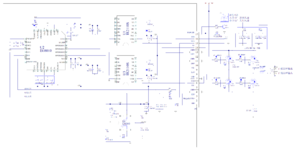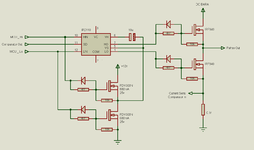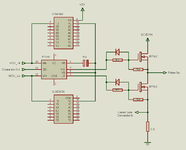tyilgin
Junior Member level 2
Hi,
I am trying to apply the diagram in the picture, but due to the current drawn by C2 and C8 during charging, the voltage formed on the 0.1r value R24 that feeds the low mosfets, Although it is delayed with the 1000pf value C21, it is noticed with the LM393 and a overcurrent alarm is created.
I'm trying to separate this situation from the true short circuit and overcurrent situation.
For this purpose, I plan to manage the charging and discharging of the VS(Pin 6) pin and the C1 capacitor over these mosfets by placing a small mosfet on the LIN(Pin 12) and HIN(Pin 14) inputs of the Ir2110.
Do you think this schematic that I designed with mini mosfets in the Sot23 case makes sense ?
If it makes sense, should it be used with the IRF840 at the input or output of the IR2110 ?
If you have any other suggestions, I would be very grateful.
I am trying to apply the diagram in the picture, but due to the current drawn by C2 and C8 during charging, the voltage formed on the 0.1r value R24 that feeds the low mosfets, Although it is delayed with the 1000pf value C21, it is noticed with the LM393 and a overcurrent alarm is created.
I'm trying to separate this situation from the true short circuit and overcurrent situation.
For this purpose, I plan to manage the charging and discharging of the VS(Pin 6) pin and the C1 capacitor over these mosfets by placing a small mosfet on the LIN(Pin 12) and HIN(Pin 14) inputs of the Ir2110.
Do you think this schematic that I designed with mini mosfets in the Sot23 case makes sense ?
If it makes sense, should it be used with the IRF840 at the input or output of the IR2110 ?
If you have any other suggestions, I would be very grateful.


